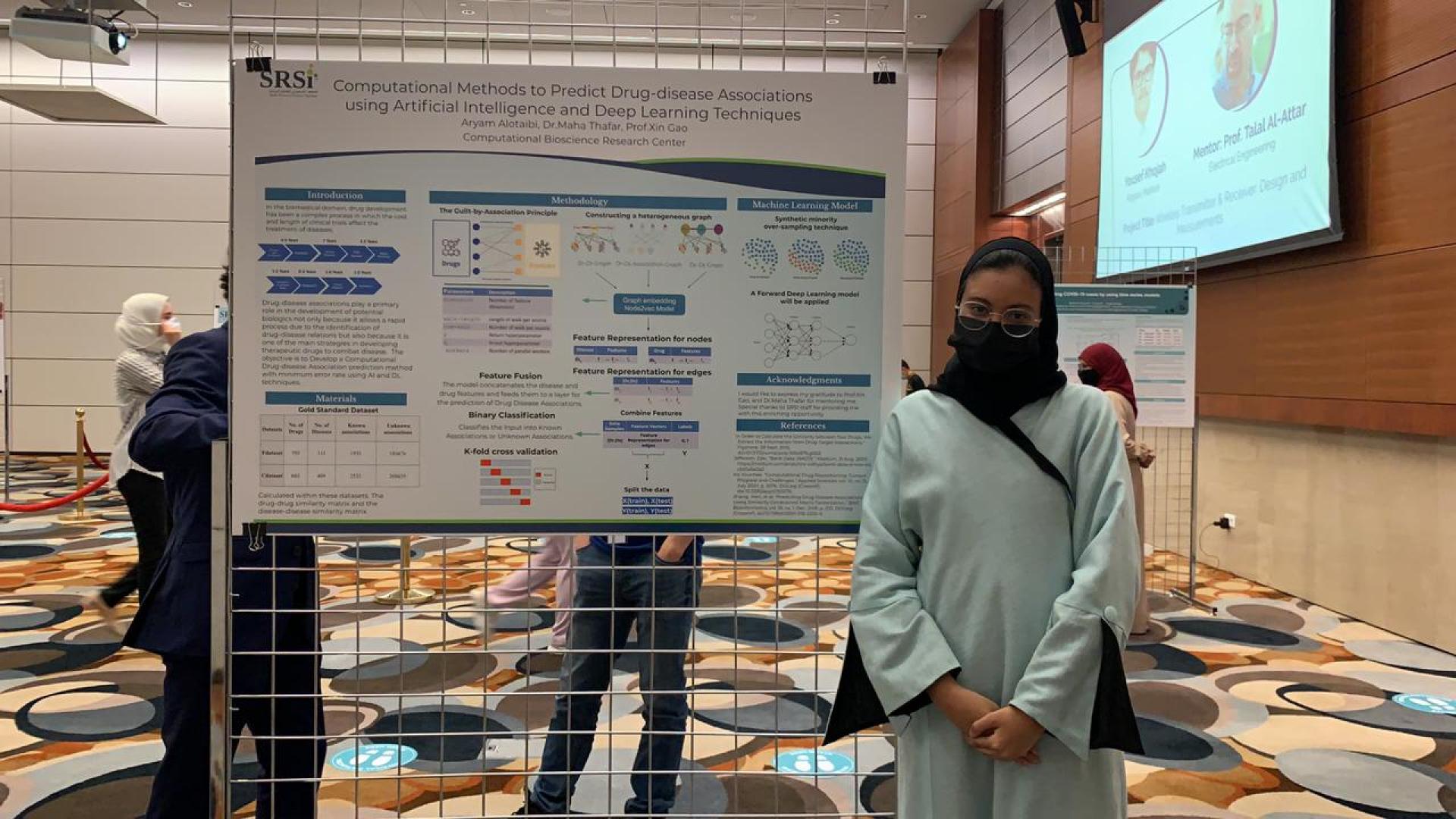Aryam Alotaibi a rising senior at the 99th public high school in Jeddah, says During her internship at Kaust, she explored interdisciplinary research in computational bioscience and bioinformatics. she worked closely with Dr.Maha on a project titled "Computational method to predict drug-disease associations using machine learning and graph embedding." they applied numerous techniques and worked on data processing, different machine learning algorithms, and model evaluation.
Abstract:
Drug repositioning (i.e., identifying novel therapeutic indications in existing drugs) is an efficient, time-saving, and cost-effective alternative to traditional drug discovery. Drug-disease association is a crucial phase in the overall drug repositioning process that takes advantage of massive databases and artificial intelligence. In this study, we first review some recent methods developed for computational drug repositioning, focusing on drug-disease indication predictions. Then, we propose a computational drug repositioning method that we developed to predict novel drug-disease interactions using multiple techniques, including graph embedding, similarity-based technique, and machine/deep learning. We identify the model as a supervised link prediction task in a heterogeneous graph consisting of a drug-drug similarity graph, disease-disease similarity graph, and known drug-disease association. Our method has achieved better results than state-of-the-art methods using the benchmark datasets, with the highest average area under the curve (AUC) of 0.92 in the benchmark dataset and other evaluation metrics.

